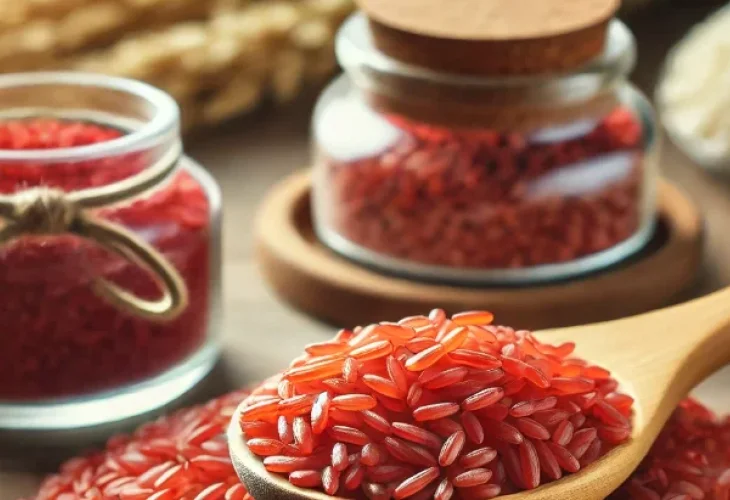Health and Nutrition
Red Yeast Rice: The Natural Remedy That Lowers Cholesterol and Boosts Heart Health
Learn how red yeast rice supports healthy cholesterol levels, its science-backed benefits, potential side effects, and who should steer clear of this powerful natural supplement

You may not have heard of it yet, but it's a natural wonder transforming everyday foods into powerful healing agents. Meet Monascus purpureus, a remarkable fungus that gives rice a striking reddish-pink hue. Beyond its beautiful color, this unique fungus holds impressive medicinal properties.
The Healing Power of Red Yeast Rice
This vibrant ingredient produces what's known as red yeast rice, and it's been the subject of numerous clinical studies examining its effects on cholesterol levels.
What does the research say?
Several long-term studies have shown that compounds in red yeast rice can:
Lower LDL ("bad") cholesterol
Raise HDL ("good") cholesterol
Reduce triglyceride levels
Help manage blood lipid levels, especially in individuals with excess weight
One prominent study from Seoul University indicated that regular consumption of red yeast rice helped improve lipid profiles in individuals struggling with high blood fats.
Another set of studies emphasized that red yeast rice is rich in potent antioxidants, which may reduce the risk of chronic diseases such as heart attacks and vascular conditions. Recognizing its benefits, Chinese researchers and companies have developed various dietary supplements derived from red yeast rice.
Data from Mount Sinai Hospital (New York)
An extensive review from Mount Sinai Hospital found that red yeast rice works by inhibiting an enzyme in the body responsible for producing bad cholesterol. One UCLA study with 83 participants suffering from high cholesterol showed that those who consumed red yeast rice for 12 weeks had:
Significantly lower total cholesterol
Reduced LDL cholesterol
Lower triglyceride levels
— compared to those who received a placebo.
Another study, presented to the American Heart Association, involved 187 people with mild to moderate cholesterol issues. The results were striking:
Total cholesterol dropped by over 16%
LDL cholesterol fell by 21%
Triglycerides decreased by 24%
HDL cholesterol increased by 14%
Who Should Not Take Red Yeast Rice?
Despite its benefits, red yeast rice isn’t safe for everyone. It is strictly not recommended for individuals with:
Liver disease or high risk of liver damage
Kidney problems
Thyroid disorders
Muscle diseases or neuromuscular conditions
High risk for cancer
Weakened immune systems or ongoing infections
Chronic alcohol use
Possible Side Effects
If consumed in excess, red yeast rice may cause:
Headaches
Abdominal pain or bloating
Gas
Dizziness
Heartburn
Muscle pain or weakness
Fatigue
Red yeast rice is more than a natural food coloring — it’s a powerful compound with real health benefits, especially for cholesterol and heart health. Like any supplement, it must be used responsibly and under medical guidance.
If you're considering trying it, speak with a healthcare professional first, especially if you have any underlying health conditions.

